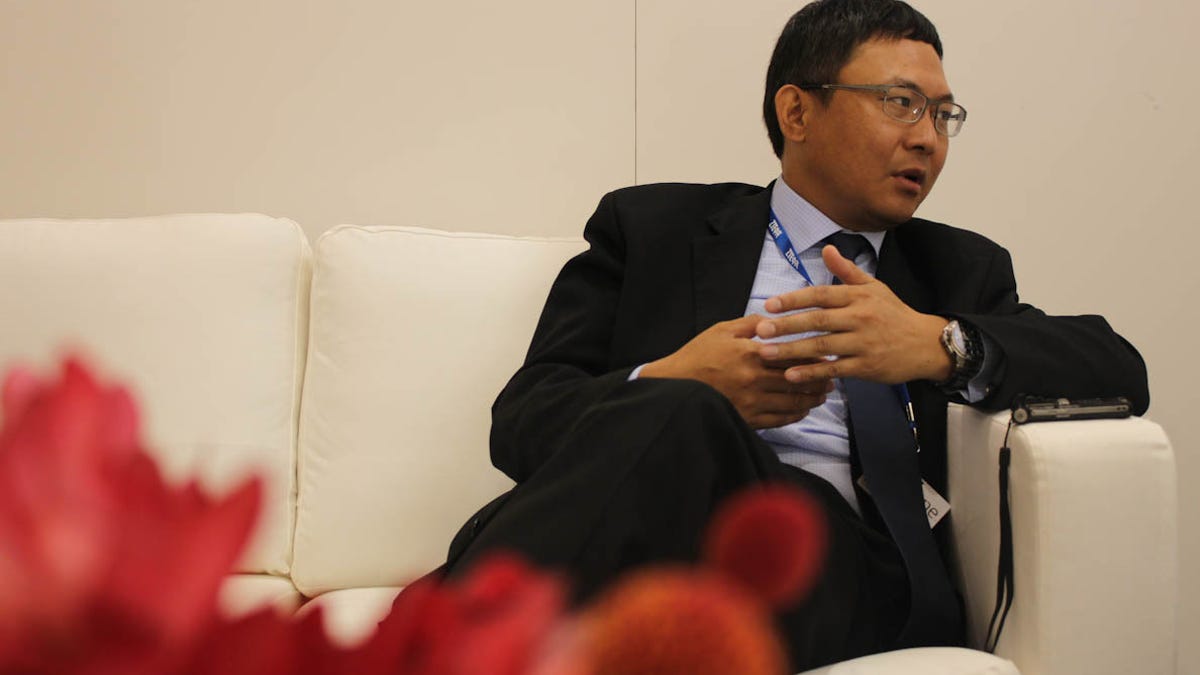ZTE plays the long game on building consumer awareness
The company believes it is wiser to work with the carriers than spend a lot of resources creating a consumer brand.

NEW ORLEANS--ZTE is virtually unknown in the U.S. and, at least for now, that seems to be OK with the company.
The Chinese company, the fourth-largest handset vendor despite its minimal presence in the U.S., is focusing on building up its relationship with the carriers and supporting their needs, said Lixen Cheng, president of ZTE's North American business, in an interview with CNET today.
"We do plan on building our consumer brand by working more closely with our carrier partners," he said.
While relatively unknown, ZTE is an up-and-comer in the U.S. handset business. Its phones have long been supplied to the prepaid carriers here, but are starting to show up with the top-tier carriers, sometimes with their own logo intact. Its rise underscores a shift of power from traditional brands to upstarts willing to undercut the competition.
While ZTE once followed HTC's playbook for entering the U.S. market and establishing a consumer brand, HTC's recent struggles have given the company pause.
"We're learning from our competitors' mistakes," Cheng said. "We're not going to waste money on building a consumer brand and not delivering on products to our consumers."
HTC, for its part, has simplified its own product line to a few key devices, and its phones have been featured heavily during the CTIA Wireless conference.
Playing the long game
ZTE hopes to get to 5 percent of the U.S. market by 2014, a forecast Cheng has acknowledged is conservative. By the time it hits that benchmark, the company will begin to spend money to market its brand directly with customers, he said.
Cheng downplayed the importance of brand in today's smartphone market, noting that when a consumer buys a phone, price is the main determining factor, followed by the operating system.
ZTE's presence at CTIA is a far cry from the splash it made at Mobile World Congress just a few months ago. At the Barcelona conference, the ZTE brand was ubiquitous, including on the lanyards holding the conference badges to large posters adorning the venue.
That's because the company actually has a larger presence outside of the U.S., although a large part of its business still comes from China. In the fourth quarter, the company was fourth in the world with 4 percent of the global market, doubling its position from a year ago, according to Gartner.
ZTE's mobile devices business in 2011 tripled from the previous year, Cheng said. Unlike some of the larger, better-known competitors, ZTE's mobile devices business is also profitable.
Focus on affordability
ZTE has so far offered budget-friendly phones to the prepaid and national carriers, and hasn't yet played in the flagship game. But Cheng doesn't believe a flagship phone is necessary; more important is the ability to support the carriers' needs, which often call for a number of mid- and low-tier phones.
So rather than a home run, ZTE is looking for a series of singles and doubles with its phones. For example, Cheng said he is shooting to sell 2 million phones in the
ZTE's low-cost structure allows the company to sell a large number of phones, Cheng said, noting that it sold 13 models last year and four this year as part of a quick ramp-up of product launches. That comes as other vendors are reducing the number of products they introduce each year.
"We're staying in the Quality Inn when other vendors are staying at the W," he said of the company's focus on reining in costs.
That could pay off down the line as more ZTE phones hit the market, generating consumer awareness through the product, as opposed to marketing.
Another trend that ZTE is slowly moving into is LTE. Cheng estimated that 10 percent of its products in the U.S. this year would work with the 4G technology, including mobile hot spots, phones, and tablets. Next year, he plans on even more devices as it further supports the carriers' expanded LTE networks.
ZTE's biggest challenge isn't its lack of an identity, it's keeping pace with the demands of the carrier, Cheng said.
"There are some high expectations from the carriers," he said.

